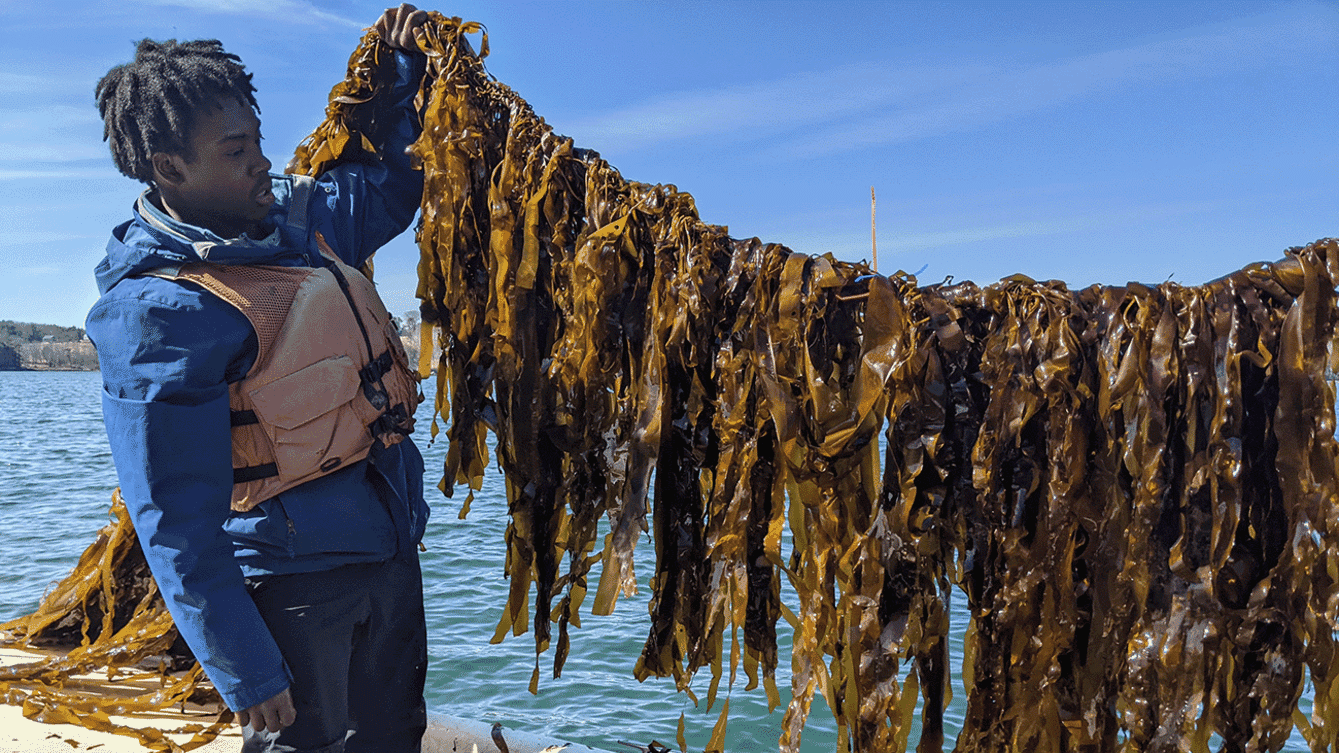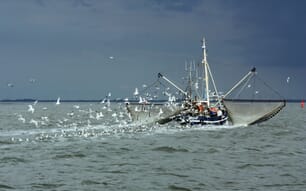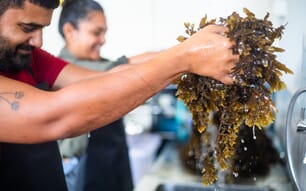
© Adam St Gelais
Researchers claim to have developed a kelp aquaculture model for the Gulf of Maine that maximises carbon sequestration and cost-effectiveness of this natural carbon sink.
The researchers, from University of Maine in collaboration with Conscience Bay Research, note that “wild macroalgae is one of the most extensive and productive vegetative biomass stocks, but it primarily grows in rocky nearshore areas not conducive to localised long-term [carbon] sequestration, which only occurs when macroalgae is incorporated within deep ocean sediments at over 1,000 metres of depth or remineralised at depths below the permanent thermocline in areas of the ocean where carbon is blocked from returning to the atmosphere”.
However, they argue that farming kelp in areas such as the Gulf of Maine, could replicate this carbon sequestration process if the kelp is transported to a deep water “sink site” and then deposited it deep in the ocean where the carbon can be sequestered.
“Farming kelp for the purposes of large-scale carbon dioxide removal is an idea that has recently gained significant attention from the research community, private sector and aquaculture industry. The goal of our analysis was to assign some realism to the conversation regarding the costs and environmental impact of this emerging technology. Many are looking to the Gulf of Maine as not only a national leader in sustainable seafood production, but also a potential carbon sink. More information is critically required to help guide potential ocean carbon dioxide removal development,” said Struan Coleman, principal author of the study and research associate at UMaine, in a press release.
“Kelp cultivation for carbon sequestration is not cost competitive right now, but there are important pathways to reducing the cost of producing kelp, which is good for everyone,” added Damian Brady, co-author of the study and UMaine associate professor of oceanography.
“We focused on the cost of production, because if it is not cost competitive with other carbon sequestration approaches, like direct air capture, then that can dictate where future research funding gets committed,” he continued.
The researchers created a detailed model for kelp aquaculture in the region. By tinkering with 18 different variables — including the assumptions for harvest labour requirements, where electricity was sourced from and the size of PVC spools within the nursery where the kelp spores or gametophytes attach and grow — they were able to reduce the cost of carbon sequestration through kelp aquaculture from $17,048 per ton of carbon dioxide equivalent to $1,257.
The findings represent a significant cost decrease for carbon dioxide removal in kelp aquaculture; however, the industry cost target for such technologies is around $100 per ton of carbon dioxide equivalent in order to be economically viable.
“This means the industry will need to innovate beyond the way farms are run now if macroalgae carbon dioxide removal is to be economically viable,” said Adam St Gelais, co-author of the study and aquaculture innovation specialist at the UMaine Aquaculture Research Institute. “Additionally – and equally important with regards to scaling – this model provides pathways to reduce production costs and reduce production-related emissions for kelp farming regardless of its ultimate use. Insights from the model can be applied now to help producers increase yield and expand margins through optimisation as they look to grow.”
Six steps to reduce costs
Even if it is not possible to optimise all the parameters outlined, the scientists pinpointed six steps that will have the most impact on production costs, energy usage and monitoring in kelp aquaculture.
First, farms should have the ability to move into larger, contiguous offshore sites in order to make more efficient use of ocean space and decrease the risk farmers assume when taking on a lease for a kelp aquaculture farm.
Farmers should also automate the seeding and harvest process, leverage selective breeding to increase yields and assess the cost-benefit of gametophyte nursery cultures as opposed to spores, as they are less expensive and allow for better selective breeding.
“Our findings are in line with many of the research and development needs that the kelp aquaculture industry has been working on for decades. I think the real value of our approach was looking at the ways in which variables such as yield, energy usage within the nursery and farm design impact the cost structure of kelp farms at a relatively large scale. If this industry is going to continue to expand, whether contributing to food or carbon dioxide removal supply chains, we’ll need to tackle these issues,” said Coleman.
Kelp farms in the Gulf of Maine can also decarbonise by utilising electricity from renewable sources and employing low greenhouse gas impact materials with long lifespans. Finally, they need to develop low-cost and accurate monitoring techniques for ocean-based carbon dioxide removal to reduce the uncertainty of carbon budgeting.
“Our team is excited to continue this work over the next two years and hope to accelerate kelp farming along the technology cost curve. We leaned heavily on our initial analysis to identify the most impactful levers that we could pull to answer pressing research and development questions. Through a combination of field and modelling studies, we hope to de-risk promising designs and technologies,” said Coleman.
The study was published August 2022 in Frontiers of Marine Science.




